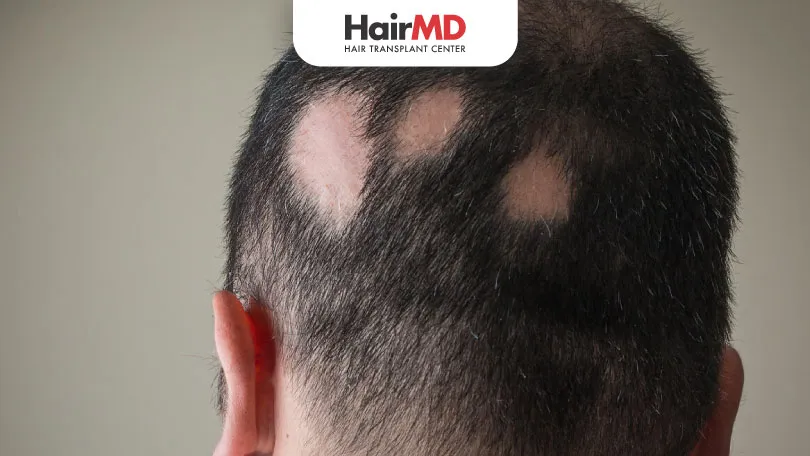
What’s covered in the article?
- What is Alopecia Areata?
- How does it classify as an autoimmune disorder? Or How does it work?
- Do therapies work on Alopecia Areata?
- When is a good time to treat Alopecia Areata?
- Conclusion
What is Alopecia Areata?
In very simple words or layman’s language – ‘It is the occurrence of hair loss in small patchy areas.’
There are discrete patches from which hair starts shedding in this condition. It is thought to be an autoimmune disorder. Autoimmune is a condition in which the body works contrarily to what it is supposed to work.
How does it classify as an autoimmune disorder? Or How does it work?
Most of the time it is better to understand how the alopecia areata works or what is the mechanism behind it. In Alopecia Areata, the body starts to think that the hair follicles are not a part of the scalp resulting in the shedding of this hair. It starts to ensure that the concerned hair follicles are drawn out from the scalp resulting in patchiness in various areas.
Do therapies work on Alopecia Areata?
For most of the alopecia areata patients, hair therapies do wonders. But for one to two percent of patients, alopecia areata is so extreme that it is not treatable. In this condition, Alopecia Areata turns into Alopecia Totalis which means hair loss from the complete scalp. In a worse situation, this turns into Alopecia Universalis; which means that the hair does not only disappear from the scalp but also from eyebrow, moustache, and beard. Perceived to be usually chronic and difficult to treat, 99% of patients of these alopecia patches are limited and they respond well to the treatment.
When is a good time to treat Alopecia Areata?
Alopecia Areata can be controlled when the patches are small. At HairMD, we have treatment modalities to treat alopecia areata with the help of our own invented & indigenous methods. The treatment is based on individual cases completely. If we don’t deem steroids to be fit in some patients, then we can use intralesional steroids in such cases.
Do You Know?
Nearly 250 Patients Visit HairMD
Everyday For Various Hair Concerns?
(Your journey to healthier and fuller hair starts here!)
Meet Our Dermatologists
Conclusion
Further Reading
7 Benefits of IV Drip Therapy for Healthy Hair
Discover how IV drip therapy nourishes hair follicles, reduces hair fall, and improves hair growth. The doctor explained the benefits.
IV Drip for Hair Cost in Pune | HairMD Doctor Guide
IV drip for hair growth delivers essential vitamins directly into the bloodstream to reduce hair fall and improve hair quality. Doctor-guided treatment.
IV Drip for Hair Growth in Pune | HairMD Doctor Guide
IV drip for hair growth delivers essential vitamins directly into the bloodstream to reduce hair fall and improve hair quality. Doctor-guided treatment.
Side Effects of IV Drip Therapy
Thinking about IV drip therapy? Read about side effects, safety precautions, and doctor guidance before starting treatment at HairMD.
Have thoughts? Please let us know
We are committed not only to treating you, but also educating you.










